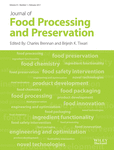Influence of Maturity on the Content of Phenolic Compounds of Alium ursinum L.
Abstract
The aim of the study was to evaluate the content of polyphenolic compounds in anatomical parts of bear garlic (Allium ursinum L.) in different stages of maturity. Identification and quantification of polyphenolic compounds were determined in the examined samples using ultra-performance liquid chromatography photodiode detector-quadrupole/time of flight-mass spectrometry (UPLC-PDA-Q/TOF-MS) method. Compounds identified in extracts of leaves, roots, steams and roots garlic include 32 kaempferol derivatives and 4 caffeic acid derivatives (occurring only in the roots). Fourteen compounds were identified in bear garlic for the first time. Total phenolic content varied from 10.9 in roots to 1477 mg/100 g DW in leaves garlic in March, and garlic in June were content from 6.5 in roots to 1195.9 mg/100 g DW in leaves.
Practical Applications
It has been well documented that plant by-products, such as leaves, stems, flowers and roots contain high levels of various health-enhancing substances, e.g., phenolic compounds. The utilization of by-products has become an important aspect in waste management in contributing to more sustainable production in the food and pharmaceutical industries. This review presents the phenolic profile of bear garlic leaves, stems, flowers and roots. These valuable compounds in Allium ursinum could be applied to great effect in the formulation of food and nutritional supplements.




